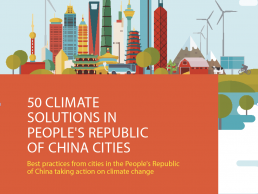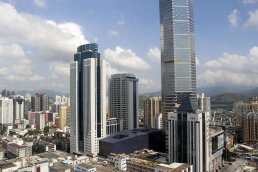First appeared in

Asian Development Bank
50 climate solutions from cities in the People's Republic of China
One of the PRC´s largest cities has implemented an Emissions Trading Scheme (ETS) to bring down carbon intensity in an economically efficient way.
Shenzhen created the first PRC carbon market with functioning trading mechanisms for trading carbon emission allowances between the city’s largest companies. This market-based policy is driving down carbon intensity without harming growth prospects for the city. The ETS was first launched as a pilot in 2013, and will become an integrated component of the national emissions reductions program.
5.58M
TONS OF CO2 EMISSIONS HAVE BEEN AVOIDED AS A RESULT OF THE 483 COMPANIES’ EFFORTS IN THE ENERGY STAR SYSTEM.
The system first sets an overall cap on carbon emissions, after which permits are allocated to companies that emit carbon dioxide. Firms can then trade the permits with other companies through the ETS, giving them the ability to make money from excess permits, or incur costs for emitting too much. This creates financial incentives for companies to reduce their emissions through the most-e¡cient means possible.
The city plans to have over 1,000 companies participating in the ETS by 2018, and aims to peak emissions by 2022, all the while reducing the carbon intensity of GDP. By 2020, the ETS hopes to have reduced carbon intensity by 40% compared with 2005 levels.

Shenzhen’s dramatic growth levels over the past decade have created an immense megacity. Decoupling future growth from emissions is a must for the municipality (photo by Lie Wu).
The Challenge
The PRC has long faced the challenge of decoupling rapid economic growth from greenhouse gas emissions. Market-based schemes such as this provide a financial incentive for companies to reduce their emissions at the lowest possible cost.
Co-Benefits
Economic 12 million tons of CO2 equivalent were traded in the first half of 2017 between all companies on the scheme, representing a total of CNY296 million.
Health Reducing CO2 emissions in Shenzhen-based companies not only reduces the climate impact of the PRC city, but also improves air quality for the 12 million citizens.
Social To involve the local community, the city holds exhibitions, site visits, and promotional campaigns to promote the uptake of a low-carbon lifestyle.

